The 2015 LCGC Awards
LCGC North America
The lives, careers, and achievements of the 2015 LCGC Award winners - Joseph Jack Kirkland, the winner of the 2015 Lifetime Achievement in Chromatography Award, and Caroline West, the 2015 Emerging Leader in Chromatography - are highlighted here.
Since the founding of LCGC in 1983, we have made it our mission to serve the separation science community by publishing articles with a practical focus on improving chromatographic methods. Over the years, those articles have included many seminal works from leading analytical scientists who have made groundbreaking advances that have benefited the entire community
Eight years ago, we decided to honor those leaders by establishing the LCGC Lifetime Achievement Award. At the same time, we established the LCGC Emerging Leader Award to recognize the work of up-and-coming scientists who are making their own mark today. The list of honorees is indeed an impressive one (Table I). This year, we are once again pleased to honor two outstanding chromatographers: Joseph Jack Kirkland, the winner of the 2015 Lifetime Achievement in Chromatography Award and Caroline West, the 2015 Emerging Leader in Chromatography. This year, we have the additional opportunity to honor Kirkland and West at Pittcon 2015 in an oral symposium as part of the Pittcon technical program.
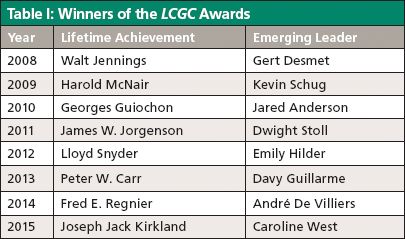
Table I: Winners of the LCGC Awards
Joseph Jack Kirkland
The English poet and artist William Blake once said "What is now proved was once only imagined." This quote is a fitting start to honor a man whose work was groundbreaking in so many aspects: Joseph Jack Kirkland. Kirkland, who is considered by many to be one of the fathers of high performance liquid chromatography (HPLC), began his scientific endeavors at the age of 10 when he received a Gilbert chemistry set. His passion for science was undeniable and after serving in World War II for the United States he decided to study at Emory University where he received a bachelor of arts degree in 1948 and a master's degree in 1949, both focused on chemistry. "I was always interested in the quantitative aspects of chemistry and the techniques of solving problems," Kirkland said. An early influence on Kirkland was R.A. Day, his analytical chemistry professor at Emory. "To this day, I remember his first lecture, which was focused on measurement precision and accuracy, with an emphasis on significant figures," Kirkland said.
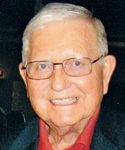
Joseph Jack Kirkland
Kirkland worked in the infrared spectroscopy laboratory at Hercules Powder from 1949 to 1950, then left to pursue his PhD degree at the University of Virginia under the guidance of Professor John Yoe. He received a PhD in analytical chemistry in 1953 and started working for E.I. DuPont de Nemours Co. at the experimental station in Wilmington, Delaware, where he was involved with spectroscopy. In 1955 Kirkland was having a problem analyzing mixtures of methylamines and after several weeks trying classical methods and infrared spectroscopy, he learned of another scientist at DuPont, Steven Dal Nogare, who was researching a new separations method called gas chromatography (GC). Kirkland gave some samples of interest to Dal Nogare, and by the next day Dal Nogare had solved the problem. "That result obviously got my attention, so I immediately arranged to get a duplicate DuPont-constructed gas chromatography instrument through Dal Nogare's help," Kirkland said. "My career with gas chromatography then began."
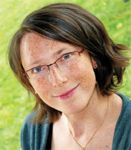
Caroline West
While at DuPont, Kirkland also worked closely with Dr. Ralph K. Iler, whose laboratory was next to Kirkland's. "As a result, some of his incredible knowledge rubbed off on me, strictly by association," Kirkland said. "Dr. Iler was largely the catalyst for my interest in silica chemistry and its utility in gas and liquid chromatography."
Kirkland worked at DuPont for 40 years before retiring as a DuPont Fellow in 1992. From there, he cofounded Rockland Technologies, Inc., where he was vice-president of research and development (R&D) until that company merged with Hewlett-Packard (HP) in 1997 and his position changed to manager of R&D at the Newport, Delaware site. In 1999, HP's test and measurement division was spun off as Agilent Technologies, where Kirkland remained employed as a senior scientist until retiring in 2001. His retirement was short-lived though, because in 2005 he was recruited to join Advanced Materials Technology, where he is currently the vice president of R&D.
Major Scientific Contributions
Kirkland's various accomplishments throughout his 60+ years in separation science are quite remarkable. He has coauthored eight books, contributed more than 160 papers, been awarded 36 patents, and taught more than 5000 students through the American Chemical Society (ACS). In fact, when Kirkland's friends and colleagues were asked to tell us what his biggest contribution has been, most gave us a long list of items.
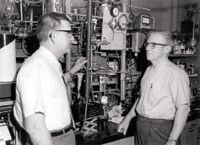
Figure 1: Joseph Jack Kirkland (left) with his lab technician, Glen Wallace, in front of a prototype HPLC system that Kirkland built in his laboratory. This picture was taken ca. 1968 before there were any commercial HPLC systems available.
"Kirkland has had so many valuable contributions to separation science that it is hard to pick just one," said Kirkland's friend and colleague Joseph J. DeStefano, the president of Advanced Materials Technology. A few of the contributions DeStefano listed included the development of the first spherical packing designed specifically for modern HPLC (the superficially porous particle called "Zipax"), the development of the "Permaphase" siloxane bonded phases on Zipax particles that enabled convenient gradient elution methods and reversed-phase applications, and his establishing processes for manufacturing spherical small-particle (5 μm), totally porous packings (trade-named Zorbax) that greatly increased resolution and decreased separation times of HPLC columns. "In my mind, HPLC would have taken much longer to develop into a powerful separation tool if Kirkland had not introduced the superficially porous particles to replace totally porous particles for LC and the permanently bonded stationary phases to enable gradient elution and reversed-phase separation technologies."
John G. Dorsey of the Department of Chemistry and Biochemistry at Florida State University also mentioned the Zorbax column as a major contribution from Kirkland. "This is one of the best known brands of columns, and there are likely few chromatographers today have not used a column that was initially developed by Kirkland," said Dorsey.
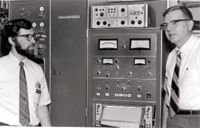
Figure 2: Kirkland (right) with a colleague, Bob Leitch, in front of the first commercial HPLC system manufactured by the DuPont Company (Model 820, serial number 1). This picture is ca. 1970.
John Dolan, the vice president of LC Resources and a longtime LCGC columnist, said if he had to pick one word to describe Kirkland it would be "innovator," saying "I think at this stage that Kirkland has made more contributions to HPLC column technology than any other individual." He explained that Kirkland has progressively improved particle technology, stationary-phase chemistry, and column packing techniques. Kirkland's development of superficially porous particles particularly impressed Dolan. "I believe that in the future this technology will be looked at as the most significant advance in HPLC since the introduction of bonded stationary phases," Dolan stated.
Lloyd R. Snyder, who is retired from LC Resources, has known Kirkland since 1968. Together, Kirkland and Snyder started and taught the ACS short course "Introduction to Modern Liquid Chromatography" and wrote five books over the years. Snyder and Dolan once wrote that Horváth, Huber, and Kirkland could be considered as the "fathers" of HPLC (1). Snyder even said that Kirkland's contributions to the development of HPLC match or exceed that of the other two in the HPLC "holy trinity" and "go far beyond any living chromatographer."

Figure 3: Kirkland with Wallace Yau working on a prototype sedimentation field flow fractionator. This picture was taken in the late 1980s.
Barry Karger, the director of the Barnett Institute and James L. Waters Chair at Northeastern University, agrees that Kirkland is one of the fathers of HPLC. Karger also said that there is no question that Jack was and remains a major figure in particle design for optimum chromatographic separations. "From the earliest days of pellicular particles to the latest core–shell low-micrometer-sized particles, Kirkland led the way," he said.
Snyder also mentioned Kirkland's development of coated small particles ("Halo") that were introduced in the mid-2000s. These columns nearly doubled the efficiency (N values) of conventional columns. "This development revolutionized everyday practice and provided a useful alternative to more expensive and demanding ultrahigh-pressure operation," said Snyder.
Kirkland also played a key role in the development of the hydrophobic-subtraction model of reversed-phase column selectivity. "This work eventually resulted in a US Pharmacopeia database that allows more than 600 columns to be compared in terms of selectivity," said Snyder.

Figure 4: The lecturers for the Introduction to Modern LC ACS course. From left to right: John Dolan, Kirkland, Lloyd Snyder, and Joseph Glajch.
Dolan also commented on Kirkland's contribution to the hydrophobic-subtraction model project. During the development of the model, Dolan's group was studying the effect of the density of surface coverage on retention, and it was difficult to do that without carefully matched columns of the same chemistry on the same silica, differing only in bonding density. "Kirkland specially prepared a set of columns differing only in bonding density and supplied several of each type for us to use, streamlining our research immensely," said Dolan.
Peter Carr, a professor of chemistry at the University of Minnesota, feels that Kirkland's contribution to the international meetings on HPLC played a vital role in keeping that meeting the premier conference in the field. "There is no doubt that without Kirkland's many contributions, HPLC would not be in the advanced state of development that it is today," he said.
Mark R. Schure, the chief technology officer at Kroungold Analytical, Inc., said that Kirkland's work with field-flow fractionation (FFF) was also very important. "He developed the time-delayed exponential field program for sedimentation FFF amongst other contributions to FFF," he said.
The late Georges Guiochon summed up Kirkland's major contributions best: "Kirkland has a profound knowledge of all practical aspects of chromatography and was able to make wonderful materials for chromatographic columns."
Teaching and Writing Contributions
Kirkland's passion for advancing chromatography by creating new products led to a passion for sharing his knowledge. "Besides these major product developments, Kirkland has contributed to the scientific community by helping to educate future generations of chromatographers through his books, lectures, scientific publications, and teaching courses," said DeStefano.
Bob Moody, who is retired from MAC-MOD Analytical, Inc., agreed that Kirkland's "enthusiasm for sharing his knowledge through teaching, publishing, and presenting his ideas at conferences and meetings" might be his greatest contribution to the field.
Through their ACS short courses, "Introduction to Modern Liquid Chromatography" and "Practical HPLC Method Development," Snyder and Kirkland - later joined by Dolan and Joseph L. Glajch - taught thousands of students over the years.
Glajch, who is now director of analytical development at Momenta Pharmaceuticals, called Kirkland an "outstanding teacher" both in formal courses and individual sessions. "He had a unique ability to focus and teach the critical aspects of chromatography that was understandable to all," Glajch said.
Klaus K. Unger, a professor at Johannes-Gutenberg University, had similar comments. "Due to his rich experimental and long-standing knowledge in the field, Kirkland always gave clear and understandable presentations with take home messages that the user could apply to their daily work," Unger said. "There are very few people that have this attitude and caliber."
The ACS course also led to the first book by Kirkland and Snyder, Introduction to Modern Liquid Chromatography (1974), often referred to as "The Bible" by many chromatographers. The book is now in it's third edition, with John Dolan as an additional coauthor.
This book has impacted so many thousands of practitioners, said Dorsey, that "Snyder and Kirkland" is an accepted reference in chromatography and their names are irrevocably linked. "For curiosity, I typed 'Snyder and Kirkland' into Google, in quotation marks, so that only that phrase appeared, and I got about 14,600 results," he said.
Carr agrees. "There is no question that this monograph had a huge impact on the field of HPLC," he said. "It helped HPLC move very rapidly into research labs in academia and industry, and then into more routine analysis laboratories in industry."
"It is rare to go into a laboratory anywhere in the world and not see a copy of this book on the shelf," added Dolan. "It sold more than 22,000 copies, which set some kind of record for a scientific reference book."
The book has also stood the test of time. "The 'Bible' simply remains the Bible," said Frantisek Svec, recently retired from the Molecular Foundry at E.O. Lawrence Berkeley National Laboratory. "I have the newest edition on my bookshelf," he said. At Pittcon 2010, Svec met up with all three authors of the third edition (Dolan, Kirkland, and Snyder) and asked them to sign his copy. "When I opened the book later, I read the dedication: 'Frank, I hope you got your money's worth! With very best wishes,' followed by the three signatures," said Svec. "I still have the book and I'm proud that it includes the dedication."
An Inspirational Scientist, Mentor, and Collaborator
So many of Kirkland's friends and colleagues said that he was an inspiration to them. "Not only has he unselfishly shared his knowledge with other scientists working in the field, but his enthusiasm has inspired several new generations of separation scientists," said Moody.
"I still recall reading - and rereading - a paper by Kirkland (2) when I was a graduate student in the late 1970s," said Dorsey "That paper laid the foundation for problems people are working on now, showing how important minimizing extracolumn effects is in achieving maximum column performance." Dorsey noted that the same paper also alerted scientists to the problem that the universally used Gaussian-based equations for plate counts are grossly inaccurate for asymmetric peaks. "A few years later I showed that paper to one of my first graduate students, Joe Foley, and that led to our development of what is known as the Foley-Dorsey equation for plate counts that gives accurate efficiency data for both Gaussian and skewed peaks," said Dorsey.
Wolfgang Lindner, of the Institute of Analytical Chemistry at the University of Vienna, said that Kirkland had a big impact on his career because his scientific and human credibility were always a very positive example. "His pioneering spirit inspired me and many other people around the world," he said.
Snyder echoed that sentiment. "Kirkland continues to provide ideas, inspiration, and leadership for everything he is associated with," he said. "I have witnessed this first-hand as well as his strong sense of the right way to do things."
Glajch was mentored by Kirkland and agrees that his teaching and willingness to help other scientists is another one of his great contributions. "His keen understanding of the fundamentals of LC was critical, but Kirkland also recognized the need to collaborate with others in the field of statistical design to design an organized approach to method development," said Glajch. Working in this way gave Kirkland the ability to expand his reach and work in a truly collaborative way, Glajch explained.
Indeed, Kirkland collaborated with a number of other scientists over the years. DeStefano mentioned Kirkland's work with visiting scientists such as Jürgen Köhler to develop the first "Type B" silica support that "vastly reduced the acidity of silica surfaces and improved the HPLC of basic compounds." He also worked with Wallace Yau to develop the concept of using bimodal pore size packing materials for performing size-exclusion chromatography (SEC) over four orders of magnitude in solute size.
"One of Kirkland's biggest strengths as a mentor and coworker is that he always went out of his way to make sure people who worked with him received credit and recognition for their work," Glajch said.
DeStefano, who was also mentored by Kirkland, saw Kirkland help many people in the companies he worked for to solve problems and establish their scientific careers. "His imposing presence and leadership skills provide encouragement for success among all the scientific relationships he has formed during his career," DeStefano said.
Awards
Kirkland has been the recipient of many prestigious awards for his work, such as the ACS Award in Chromatography, DuPont's Lavoisier Medal, the Swedish Torbern Bergman Medal, the A.J.P. Martin Chromatography Medal, the CASSS Scientific Achievement Award, and the 2013 U.D. Neue Award in Separation Science - just to name a few.
Kirkland's colleagues expressed why he was deserving of the LCGC Lifetime Achievement Award as well. "He represents the best example of the unique combination of both worlds, academia and industry, which is so rare today," said Svec.
Dolan is pleased to see Kirkland receive this award, explaining that too often rewards are only given to academics. "Kirkland chose to spend his entire career in industry, yet has contributed more than most academics to the understanding of the chromatography process and the practical application of it to real-life problems," Dolan said.
"It is also gratifying to know that someone who has been such a good role model, not only for his considerable accomplishments, but also for setting and achieving such high ethical standards in his professional and personal life is being recognized," Moody added.
DeStefano said that Kirkland's philosophy about research is best expressed when he says to others: "There is no such thing as a bad experiment. Even if you fail to achieve what was expected, you have learned something by doing it."
Indeed, Kirkland seems to exemplify Blake's quote, having "proven" so many of the concepts that he "imagined," and his success deserves to be celebrated.
Caroline West
LCGC's 2015 Emerging Leader in Chromatography, Caroline West, received her degree as an Engineer in Chemistry from the National Superior School of Chemistry of Mulhouse (2002), a master's degree in analytical chemistry from Paris VI University (2002), a doctoral degree in chemistry from Paris-Sud University (2005), and her Habilitation to Direct Research (Dr. Hab.) from the University of Orléans (2010). West originally began studying analytical chemistry because of an interest in forensics. However, after spending some time in a forensics laboratory working on the analysis of explosives residues, West realized she was more interested in the fundamentals of chromatography.
Before embarking on her impressive academic career, West spent a few years working in industrial and governmental laboratories. She spent one year at Kodak Limited R&D in Harrow, England, followed by work with the Laboratory of the Central Police in Paris in the explosives and fires division. In 2002, she moved into academia, working in the Laboratory for the Study of Techniques and Instruments of Molecular Analysis with the analytical chemistry group of South-Paris University at the Technical University Institute at Paris XI University. In 2005, West became an associate professor with the Institute of Organic and Analytical Chemistry (ICOA) at the University of Orléans, where she continues to work today. There, her work activity is shared between two teams: one focused on the extraction and analysis of bioactive molecules (under Professor Claire Elfakir) and another focused on chemo-informatics (under Professor Pascal Bonnet).
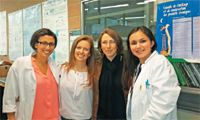
Figure 5: Caroline West with students in her lab at ICOA in 2014. From left to right: Dr. Syame Khater, Dr. Anita Aranyi, West, and Elise Lemasson.
In addition to her research and teaching work, West is in charge of master's studies in analytical chemistry as well as analytical chemistry seminars. She is also involved in activities connected with the laboratory's external relations, such as "open-door" days and welcoming foreign visitors. West is an elected member of the Experts Committee in physical and analytical chemistry of the University of Orléans and the local section for the French Society of Chemistry (SCF). She is also a member of the French Society for Separation Science (AFSEP) and an active reviewer for several analytical chemistry journals, such as the Journal of Chromatography A and the Journal of Separation Science, where she reviews about 20 papers per year.
West has also supervised five doctoral students, five master's students, and five undergraduate students. She gives lectures on analytical chemistry at the University of Orléans that average 200 hours per year; since 2006 she has also given lectures on chromatography in Poland for the joint French-Polish Chemistry degree between the University of Orléans and Jagiellonian University in Krakow, Poland.
Contributions to the Field
West's research is focused on supercritical fluid chromatography (SFC), chromatographic columns, hydrophilic-interaction chromatography (HILIC), enantioselective chromatography, and chemometrics. Her work has been published in review journals 51 times, and she has also published a book chapter. West's h-index is 16, with more than 700 external citations. She is also very active speaking at international and national conferences. West has received several awards such as the Best Young Scientist Award at the Chemometrics in Analytical Chemistry conference in 2012 and the Best Poster award at the SFC conference in 2012.
West is well known for her research in SFC. In a letter supporting West for the Emerging Leader award, Georges Guiochon noted that West developed a "remarkable classification" of the stationary phases used to pack columns for SFC and HPLC. This original, unified classification of separation phases showed that the implementation of SFC as a reversed-phase or normal-phase method depends only on the polarity of the stationary phase. "Then, the role of the organic modifier is essentially to enhance the solubility of the polar components of the sample and to modify the polarity of the stationary phase by absorbing on its active sites," Guiochon wrote.
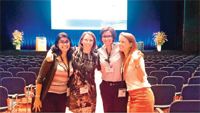
Figure 6: Caroline West with students at the ISC conference in Salzburg, in September 2014, after a talk by Dr. Syame Khater on enantioselective SFC. From left to right: Dr. Carla Grazieli, West, Khater, and Dr. Anita Aranyi.
"I consider her work as the most important contribution made to the improvement of our knowledge of SFC separations made in the last 10 years," Guiochon concluded. "It combines an excellent fundamental understanding of the thermodynamics of separations and a great practical usefulness."
West began the classification project as her PhD thesis. She said the purpose of the thesis was to investigate the applicability of porous graphitic carbon (PGC) stationary phases in SFC, so she wanted to compare PGC to other stationary phases that are commonly used in SFC, and that led to building the classification system. "I believe that the major information we have gained from this work is that the diversity of selectivities that are available to the SFC chromatographer is extremely wide and strongly dependent on the stationary phase," West said. "I hope it is helpful to those who are now getting acquainted with the technique, especially in the early steps of method development when a column must be selected."
Yingru Zhang, a senior principal scientist at Bristol-Myers Squibb Co., agrees that West's contributions to SFC have had a big impact. "West's greatest contributions to the field are her pioneering work not only in the fundamental understanding, but also in advancing the applications of SFC for both chiral and achiral separations," Zhang said. Zhang added that West is one of the most productive researchers in the field of SFC, where she "brilliantly, methodically extracts useful information from the enormous amount of experimental data she generates and provides insight into the very complex SFC chromatography process for enantiomeric separation." Zhang added that West's research provides an "excellent and valuable guideline to help scientists develop SFC methods."
Bezhan Chankvetadze, a professor and the director of the Institute of Physical and Analytical Chemistry at the School of the Exact and Natural Sciences at Tbilisi State University and editor of the Journal of Pharmaceutical and Biomedical Analysis, concurred that West's work in SFC is very significant. "I consider her contribution in reviving this very promising green separation technology as immense," said Chankvetadze.
Pat Sandra, an emeritus professor at the Research Institute for Chromatography, credits West and Eric Lesellier for believing in and promoting SFC for many years. "Their input on the present state-of-the-art in SFC is great," he said. "SFC has only been able to survive, and to gain its current momentum, thanks to scientists like West and Lesellier," said Sandra.
Eric Francotte, an executive director at Novartis Institutes for BioMedical Research, also appreciates West's work in SFC. "Her expansion of the application of SFC and more rational understanding of the fundamentals to the technique are her greatest contributions so far," he said.
David McCalley, a professor of bioanalytical science in the Faculty of Health and Life Sciences at the University of the West of England, said that West's wide experience in SFC resulted in an invitation from the editors to publish a chapter in the respected review series Advances in Chromatography in 2010. McCalley also brought up West's contributions in HILIC. West investigated the retention behavior of zwitterionic stationary phases, using a modified version of the solvation parameter model to account for the retention behavior. "In this way it was possible to identify the different factors that contributed to the retention of these solutes in the HILIC mode," said McCalley. "The approach in this work was novel, and included descriptors to account for anionic and cationic retention of the solutes." McCalley also said that this work by West was useful in providing recommendations for practitioners obtaining the optimum separation of these compounds.
Michael Lämmerhofer, a professor for pharmaceutical bioanalysis at the Institute for Pharmaceutical Sciences at Eberhard Karls Universitat Tübingen, said he is an "independent witness" to West's work because he continuously follows her work via her publications but has never collaborated with her directly. "West has published outstanding work in the field of analytical chemistry and chemo-informatics," he said. Lämmerhofer also appreciates the systematic way in which West looks at chromatographic separations and the resultant data. "The methods she uses transform data into illustrative information about mechanisms in chromatography," Lämmerhofer said. He added that he uses some of her key publications in his teaching and short courses on chiral separations. "It is my opinion that the vast majority of the results of Dr. West's studies have significantly impacted the field and, thus, have been widely cited," he concluded.
West is also noted for her great teaching skills. Zhang says that West is an excellent professor who really cares about her students. "For example, she has actively looked for and obtained internship opportunities for her students in the pharmaceutical industry," said Zhang.
Lindner also attested to West's teaching and lecturing skills. When he first met West at the 2010 HPLC conference in Boston, Lindner immediately "recognized West as a very talented and motivated speaker, particularly on SFC." Later, when he was organizing a panel discussion on the potential of SFC, he invited West as an "emerging expert" working in academia. He also invited West to give a tutorial lecture on SFC that was very well attended.
Lindner mentioned that West's efforts to get SFC technology more strongly established in the academic environment are also important because the technique has historically been more popular in industry. "To teach SFC to students is important in order to have them familiarized with the peculiarities and the differences of SFC compared to the well-established reversed-phase HPLC techniques and others," Lindner said. Lindner said West is an excellent lecturer and teacher with "great potential to become a leader in the field."
"West is open-minded, flexible in many respects, and can work in an interdisciplinary fashion, which is essential in a modern research scenario," said Lindner.
Chankvetadze agreed with Lindner's assessment. "I believe she is definitely heading to soon become one of the global leaders in the field of separation science."
More About the Winners
In-depth interviews with Joseph Jack Kirkland and Caroline West, focused on their research, challenges, and accomplishments will be published in upcoming editions of our newsletter, E-Separations Solutions.
References
(1) L.R. Snyder and J.W. Dolan, Handbook of Separation Science: Liquid Chromatography (Elsevier, Amsterdam, 2012), Chap. 1.
(2) J.J. Kirkland, J. Chromatogr. Sci.15, 303–316 (1977).
Meg L'Heureux Managing Editor, LCGC North America and Spectroscopy, Direct correspondence to: mlheureux@advanstar.com
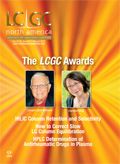
New TRC Facility Accelerates Innovation and Delivery
April 25th 2025We’ve expanded our capabilities with a state-of-the-art, 200,000 sq ft TRC facility in Toronto, completed in 2024 and staffed by over 100 PhD- and MSc-level scientists. This investment enables the development of more innovative compounds, a broader catalogue and custom offering, and streamlined operations for faster delivery. • Our extensive range of over 100,000 high-quality research chemicals—including APIs, metabolites, and impurities in both native and stable isotope-labelled forms—provides essential tools for uncovering molecular disease mechanisms and exploring new opportunities for therapeutic intervention.
New Guide: Characterising Impurity Standards – What Defines “Good Enough?”
April 25th 2025Impurity reference standards (IRSs) are essential for accurately identifying and quantifying impurities in pharmaceutical development and manufacturing. Yet, with limited regulatory guidance on how much characterisation is truly required for different applications, selecting the right standard can be challenging. To help, LGC has developed a new interactive multimedia guide, packed with expert insights to support your decision-making and give you greater confidence when choosing the right IRS for your specific needs.

.png&w=3840&q=75)

.png&w=3840&q=75)



.png&w=3840&q=75)



.png&w=3840&q=75)









